This small, rare, Morel like mushroom is the only member of genus Verpa in the UK. Many people think it is one of the “false morels”, but it is not. Genus Verpa belongs to the same family as true Morels. To find them takes patience and luck as they blend into their environment and can be very difficult to spot.
This mushroom MUST be cooked well before consumption although due to their rarity, we recommend just admiring these mushrooms and leaving them to do their thing.
Home / Mushroom Guide /
Thimble Morel
Thimble Morel
| Mushroom Type | |
| Common Names |
Thimble Morel (UK), Bell Morel (US), Morel Pen Bys (CY), Naparstniczka Stożkowata (PL), Simasüvegű Kucsmagomba (HU) |
| Scientific Name |
Verpa conica |
| Synonyms |
Monka conica, Leotia conica, Phallus conicus |
| Season Start |
Apr |
| Season End |
May |
| Average Mushroom height (CM) |
4–7 |
| Average Cap width (CM) |
2–5 |
Please note that each and every mushroom you come across may vary in appearance to these photos.
Fruiting Body
The upper surface is pale yellow/tan to pale grey in younger mushrooms, dark olive brown when more mature, the inner surface is lighter with an off-white bloom. Starting egg shaped becoming bell shaped. Does not have the honeycomb texture of true Morels but can be both smooth and/or wrinkled. The stem is joined to the fruiting body very narrowly making the ‘cap’ appear to balance on the stem.
Stem
Off-white to pale yellowish covered in tiny brown fibrils. Hollow but usually has a cotton wool like pith inside.
Habitat
Saprotrophic. Generally found on chalky soil under broad leaved trees and Hawthorn.
Possible Confusion
Could be confused with the poisonous False Morel (Gyromitra esculenta), pictured, but the fruiting body of the False Morel is usually much more lobed and convoluted and the stem is not smooth but unevenly grooved but great care should be taken when trying to identify the Thimble Morel because of this.
Taste / Smell
Taste and smell not distinctive.
Because it is anything but common, if you find it, we suggest recording it and leave it on site.
Frequency
Occasional in the UK, and most probably under recorded.
Spores
Pale orange. Ellipsoid.
Other Facts
It thought to be both saprophytic and ectomycorrhizal with deciduous trees, but as it seems, it is saprotrophic.
The colloquial name “false morels” should only be applied to the species of genus Gyromitra. Using the same colloquial name to species from different genera might be a confusing, because Gyromitras are poisonous, while Verpas are edible.


 (4 votes, average: 4.00 out of 5)
(4 votes, average: 4.00 out of 5)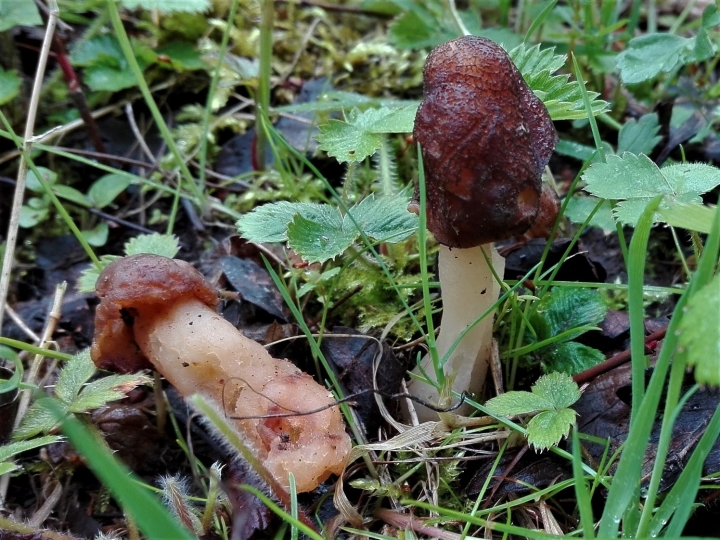
















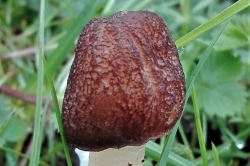
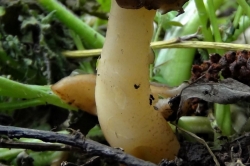
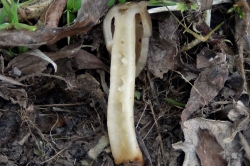
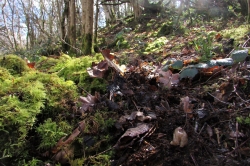
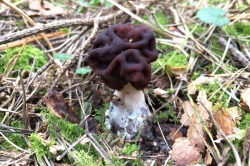






Leave a Reply